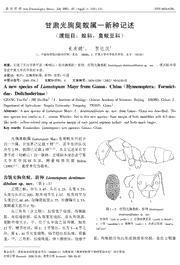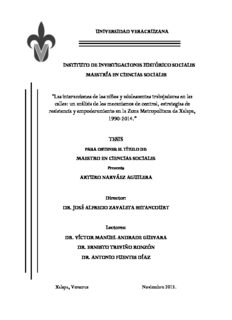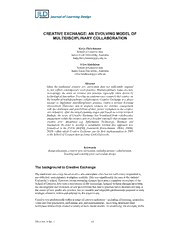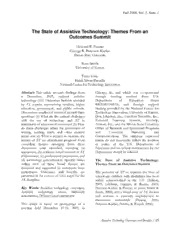
ERIC EJ902502: The State of Assistive Technology: Themes from an Outcomes Summit PDF
Preview ERIC EJ902502: The State of Assistive Technology: Themes from an Outcomes Summit
Fall 2006, Vol. 3, Num. 1 The State of Assistive Technology: Themes From an Outcomes Summit Howard P. Parette George R. Peterson-Karlan Illinois State University Sean Smith University of Kansas Tracy Gray Heidi Silver-Pacuilla National Center for Technology Innovation Abstract: This article presents findings from Chicago, IL, and which was co-sponsored a December, 2005, national assistive through funding received from U.S. technology (AT) Outcomes Summit attended Department of Education Grant by AT experts representing vendors, higher #H324EO50016, and through support education, government, and public schools. funding provided by the National Center for Discussions conducted centered around three Technology Innovation, University of Kansas, questions: (a) What are the current challenges Don Johnston, Inc., Freedom Scientific, Inc., with the use of technology and AT in Kurzweil Learning Systems, Texthelp, assessment of educational outcomes? (b) How Ablenet, Inc., and the Illinois State University do these challenges affect the assessment of Office of Research and Sponsored Programs writing, reading, math, and other content and University Marketing and areas? and (c) What is needed to measure the Communications. The opinions expressed impact of AT on educational progress? Four herein do not necessarily reflect the position overriding themes emerging from these or policy of the U.S. Department of discussions were identified, including (a) Education and no official endorsement by the assessment, (b) evidence-based research in AT Department should be inferred. effectiveness, (c) professional preparation, and (d) technology generalization. Specific issues The State of Assistive Technology: within each of these broad themes are Themes From an Outcomes Summit discussed and supported by comments from participants. Outcomes and benefits are The potential of AT to improve the lives of presented in the context of ‘next steps’ for the school-age children with disabilities has been AT discipline. widely acknowledged in the U.S. (Ashton, 2005; Edyburn, Higgins, & Boone, 2005; Key Words: Assistive technology outcomes, Peterson-Karlan & Parette, in press; Smith & Assistive technology issues, Statewide Smith, 2004), and a broad array of AT devices assessments, Differentiated assessment and services is currently implemented in classrooms nationwide (Parette, 2006; This article is based on proceedings of a Peterson-Karlan, Parette, & Wojcik, 2006). meeting held December 15-16, 2005, in Assistive Technology Outcomes and Benefits / 15 Fall 2006, Vol. 3, Num. 1 Unfortunately, the field of AT is still in an professionals regarding the documentation of infant state of development with regard to AT outcomes (Parette, 2006). Numerous documenting the outcomes of AT service individuals have published reports regarding delivery (see e.g., Edyburn, 2005; Edyburn & the role of AT in large scale assessments (cf. Smith, 2004). Legislative mandates (i.e., The Clapper, Morse, Lazarus, Thompson, & No Child Left Behind Act of 2002 [NCLB] Thurlow, 2003; Fletcher et al., 2006; Thurlow, and Individuals with Disabilities Education Minnema, & Treat, 2004; Tyndal & Haladyna, Improvement Act of 2004 [IDEIA 2004]) 2002) yet guidelines are infrequently available have placed emphasis on the participation of to assist schools in creating systems and children with disabilities in the general strategies for collecting data related to the education curriculum. NCLB, in particular, effects of AT interventions on student has resulted in tremendous pressure on public progress (SEAT Center, National Center for schools nationwide to ensure that all children Technology Innovation, and University of progress and demonstrate achievement in the Kansas, 2005). Paralleling these events, curriculum. Two nationally funded projects researchers in the area of curriculum-based were initiated to develop outcomes measurement have attempted to provide monitoring strategies (Assistive Technology teachers with means for assessing continuous Outcomes Measurement System, 2005; student progress in the classroom (Fuchs, Consortium for Assistive Technology Fuchs, & Hamlett, 2005). Given these Outcomes Research, n.d.), though, to date, simultaneous events, a current issue is how little direction is available to education education professionals can determine the Table 1 Themes Emerging from Summit Discussions Theme Issue Assessment Allowable technology on high-stakes assessment may be driving decision to implement tech in classroom – disallowed technologies are being disregarded even in the classroom Technology-supported performance is still viewed with suspicion as an academic assessment Technology-supported and differentiated assessment (universal design for assessment) should be a model Evidenced-Based Need a research base demonstrating effectiveness of AT for student Research in AT learning Effectiveness Need to identify common outcome measures related to achievement so that data sets can be aggregated Need to make better connections between R&D and research-to- practice Professional Trainings are often focused on technology operations, not on effective Preparation implementation New teachers may be “tech ready” but curricular materials, classrooms, and standards are not Technology Preparing students for the information technology world requires new Generalization thinking New technology tools require new skills for implementation AT is crossing into general education as instructional technology Assistive Technology Outcomes and Benefits / 16 Fall 2006, Vol. 3, Num. 1 role and effectiveness of AT; and perhaps reading, math, and other content areas? and more centrally is the question, “What is the (c) What is needed to measure the impact of model for determining the effect of AT on AT on educational progress? In addition to educational outcomes for students with high videotaped large group discussions, small incidence disabilities?” (SEAT Center et al., group sessions were conducted by facilitators 2005). using flip charts, allowing for capture of key thoughts by participants. Transcriptions were A Collaborative Summit Event to made of both large group proceedings of the Examine Current Issues small group discussions and analyzed using traditional qualitative methodologies (Bogdan In light of the plethora of AT issues currently & Biklen, 1998; Leedy & Ormrod, 2001; impacting public education (Edyburn et al., McMillan & Wergin, 2002). Four main themes 2005; Parette, Peterson-Karlan, & Wojcik, that emerged included: (a) assessment, (b) 2005; Wojcik et al., 2004), personnel of the evidence-based research in AT effectiveness, Special Education Assistive Technology (c) professional preparation, and (d) (SEAT) Center at Illinois State University, in technology generalization (See Table 1). partnership with the National Center for Analyses of themes emerging from each of Technology Innovation and the Department these areas of discussion are presented in the of Special Education at the University of following sections. Kansas, and with sponsorship support from Ablenet, Inc., Don Johnston, Inc., Freedom Assessment Scientific Learning Systems Group, Illinois State University, Kurzweil Educational Allowable technology may be driving decisions to Systems, Inc., and Texthelp Systems, Inc., implement technology in classrooms. Considerable hosted an Assistive Technology Outcomes discussion focused on the issue of high stakes Summit in Chicago, Illinois, on December 15- assessment practices across states and the role 16, 2005. Nationally recognized individuals of AT in those practices. Special emphasis representing vendors, research institutions, was placed on technology as an state projects, government, and school district accommodation issue. Participants observed practitioners were invited to participate. that current statewide assessment practices, Conceptually, the Summit was designed to especially accommodations allowed for bring together a cadre of experts from both testing, drives consideration of research on general and special education to clarify the technology use in content areas. Since inherent issues related to the effects of AT on limitations are placed on the use of AT in educational outcomes. Targeted outcomes testing practices, students have a diminished were to examine participant responses to a ability to demonstrate their proficiency in series of questions with the identification of content areas. strategies and recommendations that would serve as a framework for subsequent research, As noted by Martha Thurlow, Director of the policy development, curricula, and National Center for Education Outcomes, professional development activities. Key there are many issues embedded in the questions presented to the Summit practice of providing accommodations that participants included the following: (a) What “have policy associated with them which are the current challenges with the use of means they are considered okay or not okay.” technology and AT in assessment of With the associated costs of providing educational outcomes? (b) How do these accommodations, and the statewide challenges affect the assessment of writing, assessments themselves, resource constraints Assistive Technology Outcomes and Benefits / 17 Fall 2006, Vol. 3, Num. 1 are being realized by schools. Denise in the content areas are technologically DeCoste, Technology Consultant with the insufficient. These standards must be met and Montgomery Public Schools, observed: exceeded by 21st century skills and National Education Technology Standards (NETS; It is interesting that because of No International Society for Technology in Child Left Behind and the emphasis Education NETS Project, 2000-2005) which on standardized testing, our districts will require an expansion of standards to actually have fewer computers per embrace 21st century skills (Peterson-Karlan classroom now because all of those & Parette, in press) and NETS. It is important computers are going to labs in order that standards be expanded to ‘free’ the tool to do the high-stakes testing. to meet the standard and that all education professionals recognize that new tools are not This position was supported by Dave “cheating.” Edyburn, Co-Director of the Assistive Technology Outcomes Measurement System Equity issues related to statewide testing and (ATOMS) Project, who commented, “When AT surfaced repeatedly during discussions. A you put all of the dollars into the assessment, poignant point was made by Dave Edyburn there are no dollars for intervention.” who commented: However, until there is credible evidence regarding the relationship between AT use We are in a situation right now where and enhanced classroom performance, we have conflicting laws that we have statewide assessment practices will be driving to provide assistive technology. So if decisions to use AT in classrooms. This there is an academic performance prompted a response by George Peterson- problem, that is by definition the need Karlan, Illinois State University: for assistive technology and yet what we are doing is we are setting this up Are we waiting for the technology to in the traditional amount of education be allowable on the tests before we that it only counts if it’s here and make a big push to put that we’re not looking at the interaction technology in the classroom?...are we between the person and a tool because waiting for that or should we be that’s cheating, that’s less thinking about increasing the performance…When they re-roof technology tools in the classroom and your house, they are all using nail guns having a way to figure out whether the and yet in school they call it cheating students are doing better. Then if they [if AT is used, emphasis added]. don’t do better on the tests as the tests are now constructed--given a good Unfortunately, biases and misconceptions of body of data about their performance teachers regarding the fairness of using AT in the classroom--then we point to have a profound impact on whether students more of a discrepancy with the testing. learn to advocate for their own technology needed. As Cindy Okolo, of Michigan State Technology-supported performance viewed with University, noted: suspicion. Of particular concern to participants was the observation that many education …teachers are a bit paranoid about professionals continue to view technology as a assistive technology and perhaps the support for students to participate and make unfair advantage it gives kids and that progress in the curriculum. Current standards makes kids kind of paranoid. So, my Assistive Technology Outcomes and Benefits / 18 Fall 2006, Vol. 3, Num. 1 daughter is not going to be a strong disabilities then would be minimized since advocate for the use of technology in intervention is provided as academic concerns her classroom because her teachers, emerge. Since AT can increase the you know, are not sure about this and participation of students with disabilities in they are not sure if it is fair to let her the general education curriculum (Edyburn, have this sort of advantage as a 2005; Peterson-Karlan & Parette, in press), seventh grader. and minimize the performance deficits resulting from disability (Cook & Hussey, Technology supported and differentiated 2002), the RTI model holds promise for the assessment (universal design for assessment) AT field. should be a model. The nuances of current statewide assessment practices have resulted Support for developing and implementing in insensitivity to individualization. More technology-differentiated statewide assess- specifically, the notion that ‘everyone must ment practices was repeatedly expressed by pass’ inherent in NCLB seems to be driving participants. Such strategies would be non-individualized implementation of complemented by dynamic norming (Edyburn & assessment approaches in the states. This Smith, 2004) which involves the extraction of problem was clearly summarized by Dave data in a real-time database to make Edyburn: comparative norm groups. Thus, in essence, technology-supported assessment could be Because failing is not an equated with universal design for assessment option…we’ve used a metaphor--the (Dolan, 2000; Ketterlin-Geller, 2005). assembly line. We want to control the input. Let me control the curriculum, Evidenced-Based Research in AT Effectiveness let me control that processing, that highly qualified teacher, and then my Need for research base demonstrating effectiveness outcome measure is no defects. of AT for student learning. Echoing previous Everybody is ready to run. So you see findings of national need (SEAT Center, here is I think one of the issues we are 2004), discussants found that there is a struggling with--the lack of tolerance persistent need for a national database of AT for individualization. The assembly outcomes. Participants identified a need for a line model does not represent what research base demonstrating the effect of AT learning is about. When you apply on student learning. As noted by Jane that, what you’ve got is a one-size-fits- Lurquin, Illinois Department of Education, all to meet no one’s needs. there is a “need for research and having a national database or a common way that we Passage of the IDEIA 2004 has resulted in can actually have and share research on the changes in our ideas around learning and effectiveness of technology and that takes a cognitive disabilities and the concept of a pre- long time to gather.” With regard to statewide identification strategy known as ‘response to assessment practices, participants voiced intervention’ (RTI; Fuchs, Mock, Morgan, & needs for instructional as well as ‘norm- Young, 2003; Gresham, 2002). The emphasis referenced data.’ This can be accomplished of RTI focuses on the delivery of more using such strategies as concurrent time series effective instruction by encouraging earlier designs (Parette, 2005; Peterson-Karlan, intervention for students experiencing reading Wojcik, & Parette, 2006) where multiple and related learning difficulties. Identification scores are attained using AT-assisted and non- of students as having learning and cognitive assisted performance measures. Assistive Technology Outcomes and Benefits / 19 Fall 2006, Vol. 3, Num. 1 The current status was succinctly summarized teachers. As observed by Ted Hasselbring, by Caroline Van Howe when noting what University of Kentucky: Intellitools, Inc., encounters when working with schools across the country: One of the problems we have is teasing out what really made the All of the teachers that we speak to in difference? Was it the actual the school districts…are being held to technology because everything is looking for data-driven decision taking place simultaneously. Was it the making processes, so they’re looking technology, they use that. We had to vendors to provide that good, good instruction, differentiated information that the data is out there instruction and was it really that? Was to prove that this technology or this it that the kids, you know….it could intervention strategy has been be a lot of factors. Do they feel really successful…there isn’t a general safe? Is this a great teacher where they national database of research that can feel the teacher cares about them, they prove this or that product or can take risks, they can learn better? intervention. Compounding the development of evidence- However, developing such a database is based research is the technology implementation fraught with problems. Outcomes of interest paradox. That is, teachers and administrators have yet to be clearly identified across the are hesitant to implement AT in the absence country (SEAT Center, 2004). This of proof, though desired proof of recognition was mentioned by Gayl Bowser, effectiveness cannot be achieved without Oregon Assistive Technology Project, who implementation. But as Don Johnston, observed, “I am always struck that one of the founder of Don Johnston, Inc., suggested, things I think we haven’t yet done well is to really define what the outcomes we are talking …we should identify the fundamental about are.” One of the most important thing that we’re measuring and now outcomes of public education is graduation, let’s apply some technology…let’s put though as Cindy Okolo commented, “that in some money to that and say, “What all of the concern about more rigorous does this solution cost and now lets graduation requirements, people really don’t put a research piece into this and now think about assistive technology as a way to measure the fundamental thing.”…We help kids achieve those requirements.” should all be doing that as part of Related to this issue was the concern everyday implementation. regarding needs for information and professional development. Gayl Bowser stated Participants expressed concern that the that there is a need for professionals in the ‘features wars’ (Burger, 2002; McFarlane, AT discipline to “figure out what we need to 2004), i.e., competition among vendors to say to general education teachers about the develop complex devices with many features, technology they are using in their classrooms has now culminated in a recognition that the for instruction.” However, in order to do this, AT field give consideration to ‘proving’ the there is a need to differentiate the features of technology. This need does not contributions of various facets of instruction embrace a focus on the tool as a whole, but (e.g., technology, differentiated instruction, rather on critical elements of ecologically valid teacher quality) to understand ‘cause’ and tasks, i.e., real world applications (Wehmeyer, communicate this to general education Smith, & Davies, 2005). The research that is Assistive Technology Outcomes and Benefits / 20 Fall 2006, Vol. 3, Num. 1 being conducted should include matching the through Thursday because I am highly features of technology to the elements of qualified, I will do researched-based instruction in the same way that we are interventions all week and then on matching features of the technology to Friday we will do a quiz or a high- elements of the task. stakes assessment and then because of No Child Left Behind, you all pass. At both the classroom and district level, evidence-based practice and its Discussants noted that we must question the documentation was integrally linked to time, fundamental outcomes of education, i.e., what i.e., there has, to date, been little time to is the ‘base level of technology’ needed to do conduct research both on implementation and the research? As Don Johnston suggested, effectiveness of AT. Compounding this issue is lack of equity across schools with regard to I think we need to design the outcome available technology resources. of what is the fundamental thing that you want to measure for success, so Need to identify common achievement outcome what’s our ultimate goal with our measures so that data sets can be aggregated. students and how do we measure what Participants identified two ‘realities’ that that is? We get so caught up in let’s characterize current practices. First, little measure spelling as a way to look at information is available, much less agreement expression and it’s not a good…it’s on, important outcomes to measure AT not the fundamental thing that we’re effectiveness. Second, access to AT tools really measuring. during assessment processes continues to be limited. There was an acknowledgment that critical outcomes may be discrepant from Specific needs for identifying common instructional outcomes, and that educational achievement measures were identified by outcomes/standards may be discrepant from participants. The context for this need was critical life competencies. articulated by Dave Edyburn, who noted: Need to make better connections between research …you have kids with disabilities and and development and research to practice. Current you leave school. The achievement federal legislation and resultant trends in gap is based on data. Current practices education emphasize the ongoing needs for are not effective for all students. translation of AT research findings, especially There is 50 years of data that says with regard to AT outcomes and benefits, into what we do doesn’t work for some practice recommendations (Edyburn, et.al., groups of kids so we do that and then 2005; Fuhrer, 2001; Lenker & Paquet, 200). next Monday I go on and you’d fail. Participants involved in research and That is what education is. We have development noted specific challenges with been disenfranchising kids. Now, with regard to AT and content areas. Jeff No Child Left Behind, we have Higginbotham, University at Buffalo, instituted another model here and let observed that professionals should me have you guess the metaphor…is that on Monday I’m going to use state …make sure that we have a close and standards and benchmarks and that closer relationship between research will tell you what you guys are going and development of these to learn this week. Then Tuesday technologies so that there is a research Assistive Technology Outcomes and Benefits / 21 Fall 2006, Vol. 3, Num. 1 base to the…not that the technology government No Child Left Behind, works but that the technology fits the they want to see the benefit, they want person that it is supposed to be to see the test scores, they want to see working for. the children educated. The administrators--they want to see what Discussants also noted that content areas are it costs. The teachers and parents, not in the same research level and maturity who we’ve kind of left out of a lot of with relation to the curriculum and related the equation, they a lot of times don’t curriculum measures. In the discussions know where to go and what’s available regarding math, for example, it would appear so I think it’s important that we look that this discipline is much more mature in its at the cost benefit and I think in the approach to curriculum and standards (vs. future… reading and writing where less consensus may be found). Widespread dissemination of When queried further by Tracy Gray, research to practice strategies is also a National Center for Technology Innovation, recurrent need articulated by the field. who asked, “Could you just give us a consensus statement of what your perspective Not surprisingly, the lack of direction in the is as somebody working with a policymaker, field regarding effective AT practices and what that research might look like?” David documentation of outcomes raises questions replied, regarding how to communicate with government and other decision-making When you’re able to show, you know entities. David Richmond, who is responsible in the basic form, ‘X’ amount of for Constituent Relations for the 14th District dollars equals better students. ‘X’ of Illinois, provided insights for consideration: amount of dollars creates assistive technology which creates better From a government students for testing. Those are kind of standpoint…People always want to the links that as a public policy looks know where to go and what to do. I at, you know whether it goes this way have always said is look at who has the or this way, they all have to meet. authority. We talk about cost benefit analysis. Teachers answer to Professional Preparation administrators, administrators right now are answering for the test scores The importance of professional development of their schools to the states, and the of education professionals to effectively states are answering to the No Child provide AT services has been frequently cited Left Behind and the federal in the literature (Ashton, 2004; Ludlow, 2001; government. Nobody wants to be McGregor & Pachuski, 1996; Peterson-Karlan labeled as a failing school. In turn, & Parette, in press; SEAT Center, 2004; Smith when those things happen and & Allsopp, 2005; Wojcik, Peterson-Karlan, segments of their population are not Watts, & Parette, 2004). Continuing meeting yearly annual progress and are conversations regarding the AT consideration being labeled that, then administrators process (Center for Technology in Education, say, “What can we do?” At that point, Johns Hopkins University; and Technology & I believe you see administrators Media Division [TAM] of the Council for starting to say, “Is there some assistive Exceptional Children, 2005; Reed & Bowser, technology out there?” The federal 2005; Zabala & Carl, 2005) and the ability of Assistive Technology Outcomes and Benefits / 22 Fall 2006, Vol. 3, Num. 1 education professionals to effective ‘consider’ Attitude changes at the school level were also AT has yet to be realized in effective practices deemed to be a substantive area of challenge nationally. Despite meaningful dialogue, for the discipline. Denise Decoste commented presentations in a plethora of professional that “….the thing that’s important I think in venues, and scholarly publications, AT professional development is an attitude shift, consideration remains a poorly implemented is a paradigm change for teachers--they have process in many school systems. All too often, to think differently about planning their a “failure criterion” is utilized, i.e., students curriculum and they need curriculum support with disabilities are allowed to demonstrate to do that.” Jane Lurquin observed that: poor performance in academic areas before technology is even considered, much less Curriculum does need to have the implemented with these students. assistive technology built into it and also staff attitude has to be changed. In the U.S. the status of current teacher That has to start with administration preparation efforts to address such problems and superintendents because if they’re was succinctly summarized by Cindy Okolo: not into, really into assistive tech, they’re not going to get it into the I think we’re doing a really lousy job schools. with pre-service teachers and any kind of impact we can have or anybody else Trainings focused on technology operations can have on pre-service teacher vs. effective implementation. Professional preparation--ways of making development has typically focused on ‘basics information more readily available to of operation’ vs. implementation of people who are teaching are teachers, technology. As observed by Denise DeCoste: so they can get this into pre-service classes…is really important. Even though we do lots and lots of training, I think training has to go Participants agreed that major changes are beyond the software basics and move necessary in teacher education practices, into implementation. Unless we teach although it was noted that negative attitudes teachers how to use the technology towards technology remains a barrier to such effectively, what are we collecting data changes. The challenge presented by existing on? attitudes was summarized by Don Johnston: Disconnect between technology readiness of teachers I think proven results would be an and curricula, classrooms, and standards. The issue amazing, powerful influence but it’s of standards also surfaced in discussions, and more than that. I think there is an it was acknowledged that today’s standards insidious, negative attitude toward were socially validated for yesterday’s needs. technology because it takes a system Sean Smith, University of Kansas, observed that hasn’t changed for 150 years and that: forces it to change fundamentally…So give me attitude….give me a change …some of the things that we would of attitude and I think that everything be instructing or the standards that we else will be the lags and will fall into are trying to address may not be the place. really critical standards that we need to address for that transition to work and Assistive Technology Outcomes and Benefits / 23 Fall 2006, Vol. 3, Num. 1 that really what we need for life reading. You know, and that’s the competencies. reality so the creativeness about integrating technology unless it is on Resulting outcomes should be validated an IEP where you say I have to do outcomes against 21st century skills given that this and then you give that to the new teachers--typically those from the teacher for him or her to decide then Millennial or Net generations—are ready and how that fits into what they’re doing willing to use new and emerging technologies. with their IEP and then how the IEP As observed by Denise DeCoste, fits into the state standardized curriculum and how, you know what …we have lots of new teachers that their tests do to support or what their come into the district who are tech assessments look like. ready. They grew up with technology…, but then they enter a Practitioners in the field also repeatedly system where the curriculum is highly lament the cost of inherent tools that are scripted and there is no reference to available to assist students with disabilities to how to use technology as part of their participate effectively in the curriculum. As curriculum. In addition…, there is no noted by George Peterson-Karlan: communicated expectations necessarily for that. In some subjects, in this case math, there appear to be inherent tools, e.g., However, curricula in institutions of higher calculators, the other one brought up learning are not yet sufficiently organized and is the graphing calculator, that have delivered to allow these future teachers to use been identified by content experts like the technologies for learning that are so NCTM (National Council of Teachers readily available. This has an impact on of Mathematics, emphasis added) and subsequent teacher practices, as expressed by parents are actually providing these John Castellani, Johns Hopkins University: tools as part of the curriculum so it became obvious from looking at the We’ve seen that In Maryland where other charts that we don’t have the we are trying to talk to teachers about same inherent tools in writing and 21st century skills and then you go reading that have been labeled, that back to the Maryland curriculum and have been identified by national start looking for where things like content experts. inventive thinking, problem solving, a lot of just the outcomes that you’d Technology Generalization expect out of good technology integration. You can find it in Preparing students for the information technology elementary school, you can’t find it world requires new thinking. Given that our hardly at all in middle school, and in Information Age society demands skill sets high school it’s nonexistent. It’s an that public schools may not be developing in issue and teachers are to the point in children with disabilities (Peterson-Karlan & some counties where their lessons are Parette, in press; Peterson-Karlan & Parette, even scripted, at 9:09 this is what you 2005), discussants reiterated that a discrepancy are saying to a child, at 9:15 this is exists between schools and rest of world. In what you are doing, and in the last 10 addressing the concern that there is a minutes you are sustaining silent fundamental issue of preparing students for Assistive Technology Outcomes and Benefits / 24
The list of books you might like

Rich Dad Poor Dad

The Mountain Is You

Haunting Adeline

Credence
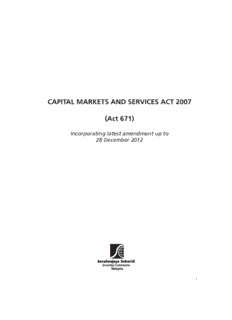
Capital Markets and Services Act 2007 (Act 671) : incorporating

Le Lettere di Giovanni

Trade unions and democracy : Cosatu workers' political attitudes in South Africa
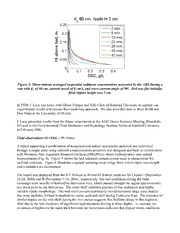
DTIC ADA523737: Sand Ripple Dynamics on the Inner Shelf

Amazon Rekognition - Developer Guide

SQL Server 2000
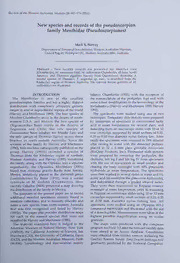
NEW SPECIES AND RECORDS OF THE PSEUDOSCORPION FAMILY MENTHIDAE (PSEUDOSCORPIONES)
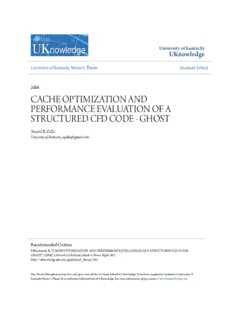
cache optimization and performance evaluation of a structured cfd code

Extreme Solar Particle Storms: The Hostile Sun

Commentary on Ephesians, Volume 1 of 2

Opere. Gli archetipi e l'inconscio collettivo
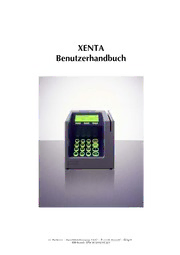
Banksys Xenta Benutzerhandbuch
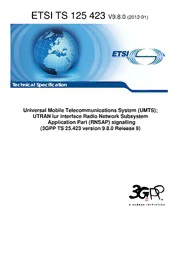
TS 125 423 - V9.8.0 - Universal Mobile Telecommunications System (UMTS); UTRAN Iur interface Radio Network Subsystem Application Part (RNSAP) signalling (3GPP TS 25.423 version 9.8.0 Release 9)
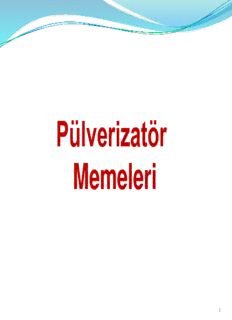
BİTKİ KORUMA MAKİNALARI 6 Kaynak

A PRELIMINARY CHECKLIST OF THE VASCULAR PLANTS OF THE CHIQUIBUL FOREST, BELIZE

ca. 2200-1550 cal ANE

